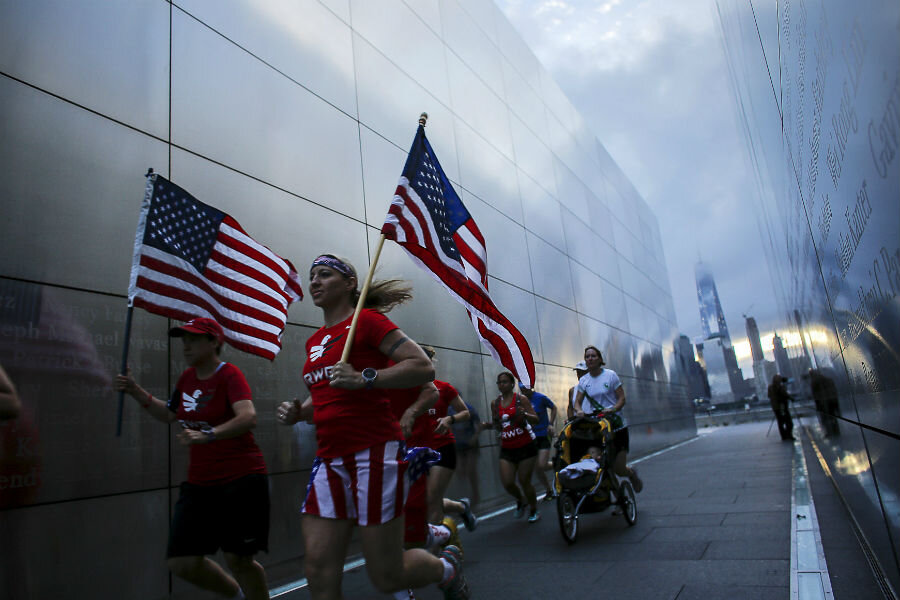Why the 9/11 memorial was opened to the public
Loading...
After years of only private memorials, "ground zero" – the site of New York's former World Trade Center buildings, destroyed by the 9/11 terror attacks – is open to the public. All are invited to come inside to pay their respects, breathing new life into the plaza that until last year was only reserved for victims’ relatives and other guests on the 9/11 anniversary.
The National Sept. 11 Memorial and Museum opened last May, and since then, has attracted almost 3.6 million visitors, reports The Associated Press.
As doors opened to the public for the first time to commemorate the attacks that killed nearly 3,000 people at the World Trade Center’s twin towers, the Pentagon, and in a field near Shanksville, Pennsylvania in 2001, the new policy proved popular. About 20,000 people showed up at the memorial plaza that evening.
“When we did open it up, it was just like life coming in,” museum president Joe Daniels said to the AP.
He said that the memorial would remain reserved for the private ceremony in the morning on Sept. 11. But afterward, "the general public that wants to come and pay their respects on this most sacred ground should be let in as soon as possible.”
This year, Friday morning at ground zero – and many other places around the country – began with a somber moment of silence. As hundreds of victims’ relatives gathered, they clutched photographs, and began reading the names of their family and friends now lost 14 years ago.
“It's the same as if it was yesterday. I feel her every day,” said Nereida Valle, who lost her daughter, Nereida De Jesus.
Though scenes of the commemoration have changed since the attacks nearly a decade and a half ago – with the number of friends and family showing up each year dwindling, and with politicians debating whether Sept. 11 should be declared a national holiday – some are keeping the focus personal.
“This day should be a day for reflection and remembrance. Only,” Faith Tieri, who lost her brother, Sal Tieri Jr., said to the AP during last year's commemoration.
“We come every year,” said Tom Acquaviva, 81, who lost his son, Paul Acquaviva, a systems analyst who died in the World Trade Center's north tower. “The crowds get smaller, but we want to be here. As long as I'm breathing, I'll be here.”
This report contains material from The Associated Press.








